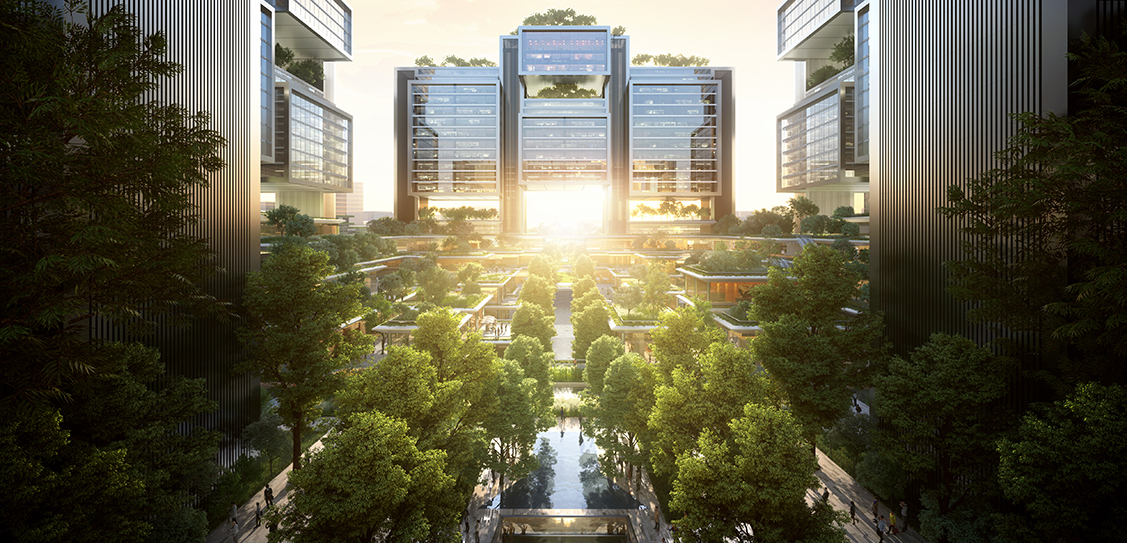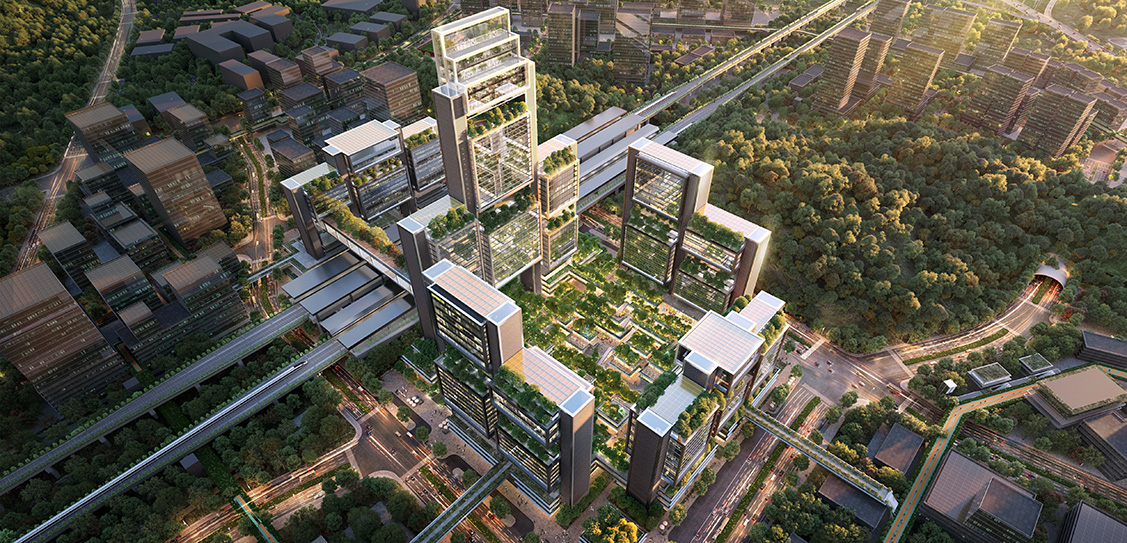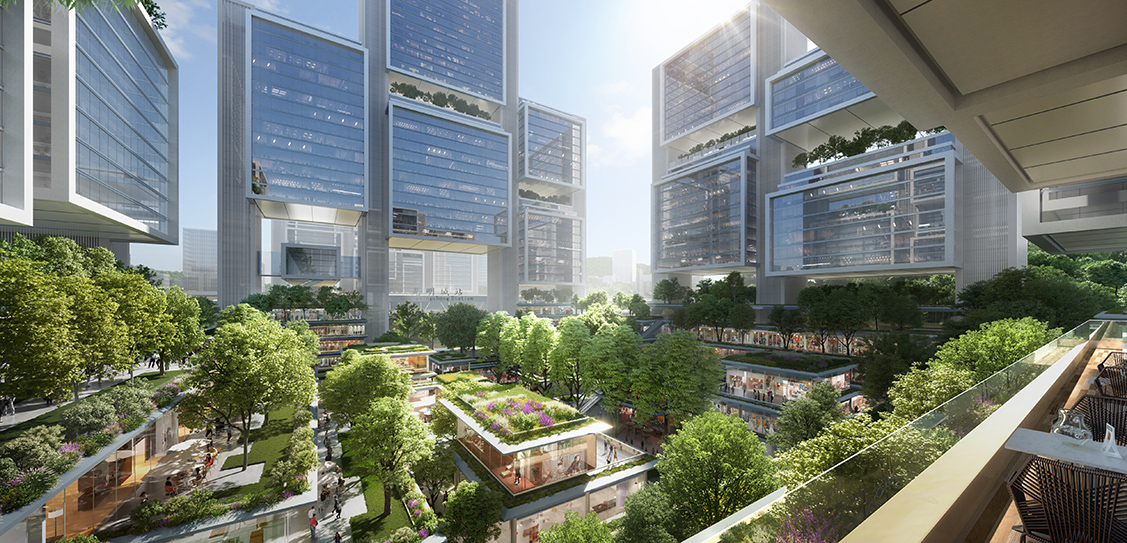The proposal also integrates three new metro lines in the city and is the central focus of a new masterplan for the region that aims to create a new urban destination.
The Hub is envisaged as an integral part of the city, well connected with the surroundings in the masterplan area. Two major rail lines intersect at the site and the surrounding topography also serves as a significant barrier to movement in and around the site. To overcome this, the masterplan seeks to create a network of slow-moving autonomous vehicles with skybridges and shared surfaces for cyclists and pedestrians.
The central idea is to capitalise on the natural beauty of the site, utilising the lush landscape to create a lively experience for visitors and locals. It will be a forest gateway into Shenzhen. Our proposals link the site with a slow-moving traffic network that provides efficient and easy connection to the Hub. These shared surfaces ensure better accessibility throughout the whole masterplan area and create a platform ready for innovative transportation solutions for the future.
The existing high-speed rail station lies at the centre of the site, oriented in the north-south direction. A sunken green spine in the east-west orientation cuts across the site and through the high-speed rail station at ground level. A new metro station is located to the west of the high-speed rail station, straddling the green spine. The intercity link station is located further west, towards the edge of the site, connecting Guangming Hub to the city. Easy wayfinding, minimum walking distances and shaded walkways characterise the scheme.
A large retail podium sits atop the underground metro and intercity link stations, with stepped green terraces that create a link with the surrounding forest, looking onto the central green spine. There are a series of office towers, situated at cardinal points across the site. Inspired by the traditional Chinese gateway that marks important entryways, these towers are envisaged as ‘gateways’ to the hub.
The openings at the ground level of the tower buildings mark the central access to high-speed rail stations. Subways and bridges to neighbouring plots create convenient connections for pedestrians, cyclists and autonomous vehicles. A new transport museum is situated on the bridge over the high-speed rail station, connecting the eastern and western halves of the site. Visitors will enjoy futuristic exhibition displays using latest VR, AR and projection mapping technologies against the panoramic view of the high-speed rail station.
In addition to controlled wind and solar access, the project maximises landscape areas, public amenities and pedestrian priority to provide enjoyable outdoor spaces. The design aligns with the city’s Sponge City programme with an emphasis on prioritising the use of sustainable urban drainage systems through the integration of landscape, permeable pavement and bioretention water features.



